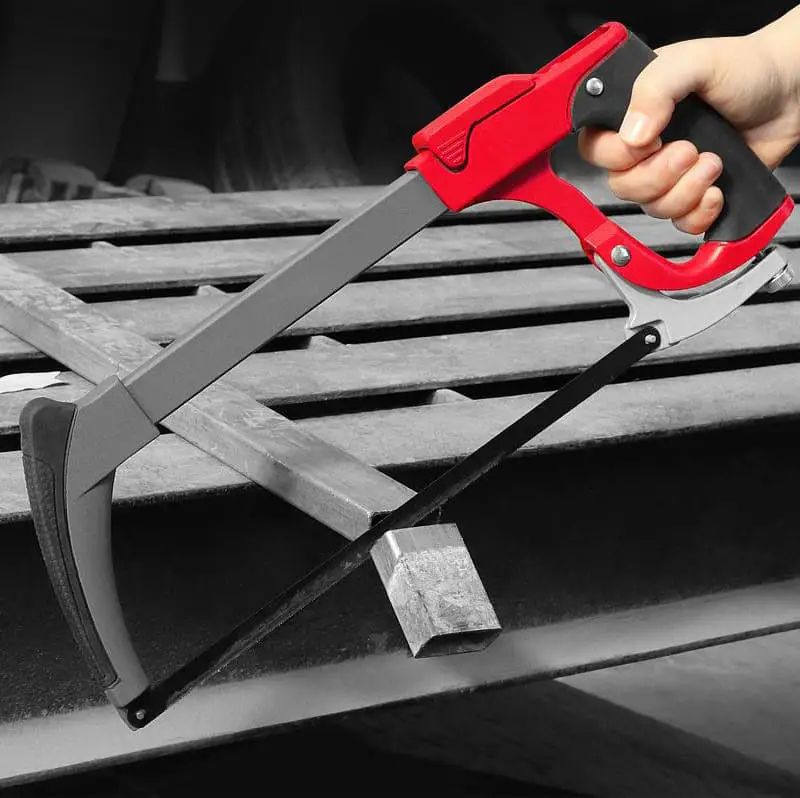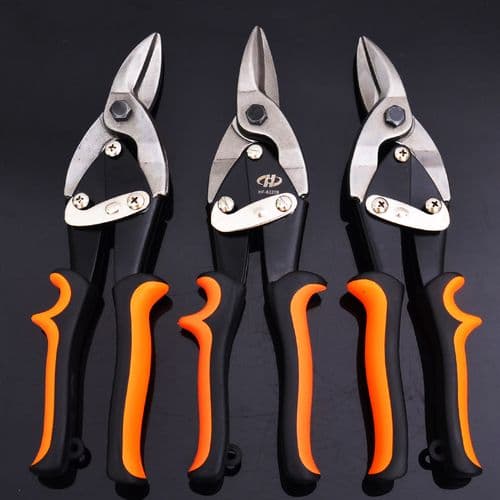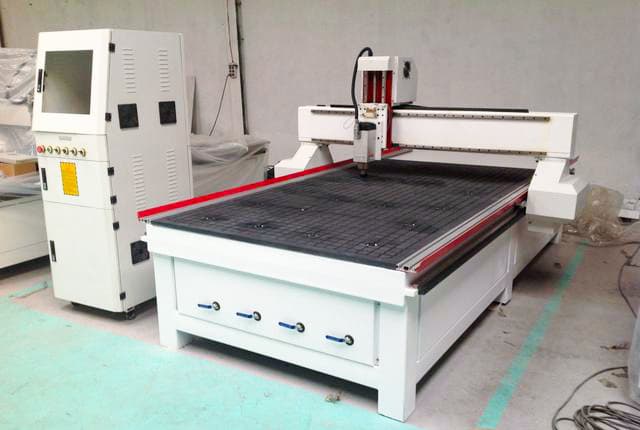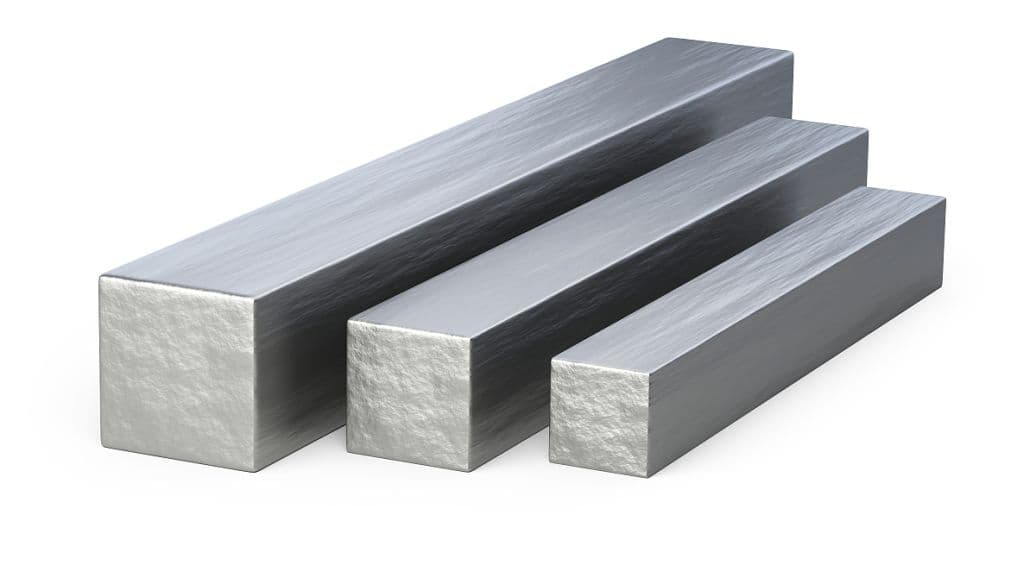Brief overview of aluminum and its applications
The density of aluminum is 2.7g/cm³ (one third of that of iron and copper), with good ductility and electrical conductivity two thirds of that of copper wire, but with only one third of the weight and a lower price.
It is widely used in the manufacturing of wire, cable and high voltage radio industries.
Pure aluminum has a relatively low density, but aluminum alloys have greatly improved density and hardness.
Currently, aluminum alloys are widely used in aircraft, automobiles, trains, shipbuilding and other manufacturing industries.
In addition, large amounts of aluminum and its alloys are also used in space rockets, spacecraft and artificial satellites.

Importance of suitable cutting tools for aluminum
Choosing the appropriate aluminum cutting tool can ensure high cutting precision and work quality, meeting the cutting requirements of various aluminum alloy specifications.
Professional cutting can be carried out according to need, avoiding waste of raw materials and avoiding significant losses or negative impacts.
Choosing a professional and reliable brand of aluminum cutting tools can ensure stable and efficient performance during work.
The functions are reliable and stable, without security risks, and the operation and use process is simple and worry-free.
There is no need to worry about sudden malfunction or material loss, making it suitable for specific usage demands in various working environments.
In this post, we will do our best to help you select the best cutting tools for your aluminum projects.
Understanding Aluminum and Its Unique Properties
The two prominent characteristics of aluminum are its lightness and resistance to corrosion. Furthermore, it has the following characteristics:
1. Aluminum has a low density, just 2.7g/cm³. Although it is relatively soft, it can be made into various aluminum alloys such as hard aluminum, ultra-hard aluminum, rust-resistant aluminum and cast aluminum.
2. The electrical conductivity of aluminum ranks second after silver, copper and gold. Although its conductivity is only 2/3 that of copper, its density is only 1/3 that of copper.
Therefore, when transmitting the same amount of electricity, aluminum wires are only half the weight of copper wires.
The oxide film on the surface of aluminum not only has corrosion resistance, but also has a certain insulation ability, making aluminum widely used in the electrical manufacturing industry, wire and cable industry and radio industry.
3. Aluminum has good ductility, second only to gold and silver. It can be made into aluminum foil thinner than 0.01mm at 100℃~150℃.
These aluminum foils are widely used for packaging cigarettes, sweets, etc.
They can also be made into aluminum wires and bars, and can be rolled into various aluminum products.
Types of Aluminum Cutting Tools
Hand Tools
1. Saws

A saw is a cutting tool consisting of a frame and a blade, commonly used in woodworking on construction sites.
2. Aviation Cutouts

Aviation shears are made of strong alloy steel and are suitable for cutting thin sheets of metal, aluminum, plastic and other materials. They come in left-cut, right-cut, and straight-cut varieties. The quality of the cuts affects the type of blades they have.
3. Teethers

Nibblers are mechanical tools commonly used in model making to cut plastic or metal at connection points, saving time and effort compared to manual twisting.
They are scissor-shaped with heads that are smaller and thicker than regular scissors, similar to the back half of pliers. Some cutters are designed to cut wires, while others have the function of stripping wires.
Eletric tools
1. Circular saws

A circular saw is a toothed tool used to cut steel. Metal circular saws can cut steel easily, just like cutting a 2×4 with traditional pipe.
Compared to previous products, circular saws use unique materials and tooth designs that allow for faster metal cutting, better chip handling, and no heat transfer during the cutting process.
2. Puzzles

Jigsaws are sawing machines in which the blade is mounted on a sliding guide (or roller) that moves along the track. The sawing process is carried out using a feeding mechanism.
3. Band saws

Band saws are machine tools used to cut various metal materials. They are classified into horizontal and vertical types according to their structure, and semi-automatic, fully automatic and CNC types according to their function.
Horizontal band saws can be divided into double-column and scissor types.
4. CNC Routers

CNC routers can perform relief carving, flat carving, hollow carving and other tasks on aluminum alloys, copper, electric wood, wood, jade, glass, plastic, acrylic and other materials. They have high carving speed and accuracy.
Tool materials
1. High Speed Steel (HSS)
High-speed steel is a type of high-alloy tool steel with added alloying elements such as tungsten, molybdenum, chromium, vanadium, etc. It has high strength and toughness, as well as certain hardness and wear resistance, making it suitable for various cutting tool requirements.
The manufacturing process of HSS tools is simple and they can be easily sharpened to a sharp cutting edge.
Therefore, despite the emergence of several new types of tool materials, HSS tools still account for a large proportion of metal cutting. They are suitable for machining non-ferrous metals and high-temperature alloys.
Due to the properties mentioned above, cutters for riser casting, cross channel milling and expansion channel milling in piston machining use HSS material, while drill bits are made of HSS.
2. Carbide
Carbide is made by powder metallurgy from hard-to-melt metal carbides (such as WC, TiC, TaC, NbC, etc.) and metal binders (such as Co, Ni, etc.).
Because carbides have high melting points, high hardness, good chemical stability and thermal stability, the hardness, wear resistance and heat resistance of carbide materials are very high.
The commonly used hardness of carbide is 89~93HRA, higher than that of HSS (83~86.6HRA). At 800 ~ 1000 ℃, it can still perform cutting. At 540°C, the hardness of carbide is 82~87HRA, and at 760°C, the hardness can still be maintained at 77~85HRA.
Therefore, the cutting performance of carbide is much better than that of HSS, and the durability of the tool can be improved by several to dozens of times. When the durability is the same, the cutting speed can be increased by 4 to 10 times.
Currently, our company mainly uses YG6 and YGX in WC-TiC-Co grade of carbide tools. YT15 and other WC-TiC-Co grade carbides are used for rough machining, semi-finishing and some finishing processes in piston machining.
3. Polycrystalline diamond (PCD)
Diamond is currently the hardest mineral material known, with the best thermal conductivity. Its wear when combined with various metals and non-metallic materials under friction is only 1/50 to 1/800 of that of carbide, making it the ideal material for making cutting tools.
However, natural monocrystalline diamonds are only used for ultra-precision machining of jewelry and certain non-ferrous metals.
Although industrial production of large-particle single-crystal artificial diamonds has been achieved by companies such as De Beers and Sumitomo Electric, they have not yet entered a phase of extensive application.
The cutting edge of a diamond tool is extremely sharp (which is important for cutting chips with a very small cross-section), and the roughness of the blade is small, with a low coefficient of friction. The cutting process does not easily produce chip lumps, resulting in high surface quality during machining.
When machining non-ferrous metals, the surface roughness can reach Ra0.012 µm and the machining accuracy can reach IT5 or higher.
There are three types of diamond tools: single crystal natural diamond tools, full artificial polycrystalline diamond tools and composite diamond tools.
Due to their high cost, natural diamond tools are less used in actual production. Artificial diamonds are formed by the transformation of graphite under high temperature and pressure through the action of alloy catalysts.
Diamond composite blades are formed by sintering a layer of diamond approximately 0.5 ~ 1 µm thick onto a carbide substrate using advanced processes such as high temperature and high pressure.
This material uses carbide as a substrate and its mechanical properties, thermal conductivity and expansion coefficient are similar to those of carbide.
The diamond crystals in the artificial polycrystalline diamond abrasive on the substrate are irregularly arranged, and its hardness and wear resistance are uniform in all directions.
Polycrystalline diamond (PCD) is formed by sintering sieved artificial diamond microcrystals under high temperature and pressure. During the sintering process, the addition of additives allows the formation of connection bridges between diamond crystals, mainly composed of TiC, SiC, Fe, Co and Ni.
The diamond crystals are firmly embedded in a strong skeleton formed by the structural bridge, which is held together by covalent bonds, greatly improving the strength and toughness of PCD.
Its hardness is about 9000HV, flexural strength is 0.21~0.48 GPa, thermal conductivity is 20.9J/cm sµ℃, and thermal expansion coefficient is 3.1×10- 6/℃.
Most PCD cutting tools used today are composites of PCD and carbide substrates, with a layer of PCD sintered onto the carbide substrate.
The thickness of PCD is generally 0.5mm and 0.8mm, and due to the conductivity of the PCD bonding bridge, it is easy to cut into various shapes and make various tools, and the cost is much lower than that of natural diamonds .
Polycrystalline diamond (PCD) can machine various non-ferrous metals and high-performance non-metallic materials that are extremely wear-resistant, such as aluminum, copper, magnesium and their alloys, carbide, fiber-reinforced plastics, metal-based composite materials, wood materials water-based composites, etc.
The average size of diamond particles in PCD tool material is different, which affects its performance differently.
The larger the particle size, the greater its wear resistance. Under similar cutting edge processing amounts, the smaller the particle size, the better the cutting edge quality.
PCD tools with particle sizes of 10~25µm can be used for high-speed cutting of silicon-aluminum alloys with Si content of 12~18 at speeds of 500~1500m/min, while PCDs with particle sizes of 8 ~9µm are used to process aluminum alloys with Si content less than 12%.
For ultra-precision machining, PCD tools with smaller particle sizes should be selected. PCD's wear resistance weakens at temperatures above 700°C because its structure contains Co metal, which promotes the “reverse reaction” of diamond transformation into graphite.
PCD has good fracture resistance and can perform intermittent cutting. It can mill aluminum alloy with 10% Si content at a high speed of 2500m/min.
The high hardness, wear resistance, thermal conductivity and low coefficient of friction of diamond materials can achieve high precision, high efficiency, high stability and high surface smoothness in the processing of non-ferrous metals and wear-resistant non-metallic materials.
When cutting non-ferrous metals, the service life of PCD cutting tools is tens or even hundreds of times longer than that of cemented carburetor
4. Cubic boron nitride (CBN)
Cubic boron nitride (CBN) is a new type of artificial synthetic material developed in the 1950s. It has high hardness and good wear resistance, and is widely used in the machining industry.
Polycrystalline cubic boron nitride (PCBN) is produced by sintering CBN micropowder with a small amount of binder phase (Co, Ni or TiC, TiN, Al203) and a catalyst at high temperature and pressure.
It has high hardness (second only to diamond) and heat resistance (1300 ~ 1500 ℃), excellent chemical stability, much higher thermal stability (up to 1400 ℃) and thermal conductivity than diamond tools, low coefficient of friction but lower strength .
Compared with diamond, the notable advantages of PCBN are much higher thermal stability, up to 1200℃ (diamond is 700~800℃) and can withstand higher cutting speeds; Another notable advantage is its great chemical inertness, which does not react with ferrous metals at 1200~1300°C and can be used for steel processing.
Therefore, PCBN tools are mainly used for efficient processing of difficult-to-machine black materials.
In addition to the above features, PCBN tools also have the following advantages:
(1) high hardness, especially suitable for machining quenched and hardened steel with HRC of 50 or more, heat-resistant alloys with HRC of 35 or more, and gray cast iron with HRC of 30 or less that are difficult to machine with other tools ;
(2) compared with carbide tools, they have high cutting speed and can achieve high-speed and efficient cutting;
(3) good wear resistance, high tool durability (10-100 times that of carbide tools), and able to obtain better surface quality of the workpiece, achieving grinding by turning.
The disadvantage of PCBN tools is that their impact resistance is worse than that of carbide tools, so when using them, attention should be paid to improving the rigidity of the process system and avoiding impact cutting.
PCBN can be made into integral blades or composite blades combined with carbide. PCBN composite sheets have a 0.5~1.0mm thick PCBN layer sintered on a carbide substrate, which has good toughness and high hardness and wear resistance.
The performance of PCBN mainly depends on the CBN particle size, CBN content and the type of binder.
According to its structure, it can be divided into two categories: one is directly bonded by CBN crystals, with high CBN content (above 70%), high hardness, and suitable for cutting processing of heat-resistant alloys, cast iron , and metals sintered with iron;
The other is based on CBN crystals, sintered by ceramic binders (mainly TiN, TiC, TiCN, AlN, Al203, etc.), with low CBN content (below 70%), low hardness, and suitable for cutting machining tempered and hardened. steel.
Cubic boron nitride tools are used in turning cast iron ring grooves inlaid with piston rings, as well as machining piston solid contact molds.
5. Ceramics
The main advantages of ceramic cutting tools are: high hardness and wear resistance, with room temperature hardness of 91-95HRC; high heat resistance, with hardness of 80HRC at high temperature of 1200 ℃; and minimal reduction in flexural strength and toughness under high temperature conditions.
They also exhibit high chemical stability, as ceramics have a low affinity for metals, good resistance to oxidation at high temperatures, and do not interact with steel even at melting temperatures.
Therefore, there is less bonding, diffusion, oxidation and wear on the cutting tool. They have a lower coefficient of friction, making it difficult for chips to stick to the tool and form chip nests.
The disadvantages of ceramic knives are their brittleness, low strength and toughness, with only 1/2 to 1/5 the bending strength of hard alloys.
Therefore, appropriate geometric parameters and cutting quantities must be selected when using them to avoid impact loads that may cause chipping or breakage of the blade.
In addition, ceramic knives have low thermal conductivity, only 1/2 to 1/5 of hard alloys, with thermal expansion coefficients 10-30% higher than hard alloys, resulting in low thermal shock resistance.
Currently, ceramic cutting tools have not been applied to the processing of aluminum pistons.
Essential Features of Aluminum Cutting Tools
1. High hardness and wear resistance
Hardness is a fundamental characteristic that cutting tool materials must possess. To cut chips from a workpiece, the hardness of the tool must be greater than that of the workpiece material. The hardness of the cutting edge of tools used to cut metal is generally greater than 60HRC. Wear resistance refers to the ability of a material to resist wear and tear.
Generally, the higher the hardness of the cutting tool material, the better its wear resistance. Hard points in the structure (such as carbides and nitrides) with greater hardness, greater quantity, smaller particles and more uniform distribution have better wear resistance.
Wear resistance is also related to the chemical composition of the material, resistance, microstructure and temperature of the friction area. The wear resistance WR can be expressed by the formula:
WR = KIC0.5E-0.8H1.43
Where H is the hardness of the material (GPa). The higher the hardness, the better the wear resistance.
KIC is the fracture toughness of the material (MPa·m½). The higher the KIC value, the smaller the material fracture caused by stress and the better the wear resistance.
E is the material's modulus of elasticity (GPa). When E is small, it helps to produce lower stresses caused by microdeformations caused by abrasive grains, leading to better wear resistance.
2. Adequate strength and endurance
To avoid chipping or breaking the blade during use when subjected to great pressure, impacts and vibrations during the cutting process, cutting tool materials must have sufficient strength and toughness.
3. High heat resistance (thermal stability)
Heat resistance is the main indicator for measuring the cutting performance of cutting tool materials. Refers to the ability of a cutting tool material to maintain a certain level of hardness, wear resistance, strength and toughness under high temperature conditions.
Cutting tool materials must also have the ability to resist oxidation, bonding and diffusion at high temperatures, which means they must exhibit good chemical stability.
4. Good thermophysical properties and thermal shock resistance
The better the thermal conductivity of the cutting tool material, the easier it is for cutting heat to diffuse away from the cutting area, which helps reduce the cutting temperature.
During intermittent cutting or when using a cutting fluid, the tool often experiences severe thermal shock (rapid temperature changes), resulting in cracks inside the tool that can cause breakage.
The material's ability to resist thermal shock can be expressed by its thermal shock resistance coefficient R:
R = λσb(1-µ)/Eα
Where λ is the coefficient of thermal conductivity, σb is the tensile strength, µ is Poisson's ratio, E is the modulus of elasticity and α is the coefficient of thermal expansion.
A higher thermal conductivity coefficient facilitates heat dissipation, reducing the temperature gradient on the tool surface.
A lower coefficient of thermal expansion reduces thermal deformation, and a lower modulus of elasticity can decrease the magnitude of alternating stresses resulting from thermal deformation, thus helping to improve the thermal shock resistance of the material.
Cutting tool materials with good thermal shock resistance can utilize cutting fluids during machining processes.
5. Good processability
To facilitate tool manufacturing, cutting tool materials require good processability such as forging properties, heat treatment properties, high temperature plastic deformation properties and grinding processing properties.
6. Economic Efficiency
Economic efficiency is one of the important indicators of cutting tool materials. Although high-quality cutting tool materials may have high unit costs, their longer lifespan may not necessarily result in high costs per component.
Therefore, when selecting materials for cutting tools, their economic impact must be comprehensively considered.
Tips for Successful Aluminum Cutting
1. Choosing the Right Saw Blade:
Industrial aluminum profiles have lower hardness compared to steel, which makes them relatively easy to cut. However, due to their lack of hardness, they also tend to stick to the blade. Therefore, it is important to use sharp blades and replace them regularly.
2. Choosing the appropriate lubricant:
If you cut aluminum profiles without using lubricant, the cut surface will have many burrs that are difficult to clean. This will also damage the saw blade.
3. Controlling the cutting angle:
Most industrial aluminum profiles are cut at right angles, while some require cuts at angles such as 45 degrees. When cutting at an angle, it is important to control the angle carefully. It is best to use a CNC saw for this purpose.
Security considerations
1. Before starting the operation, we must operate the machine for one minute to check whether it works well before proceeding with the operation.
2. When cutting aluminum profiles, operators must focus their attention and strictly prohibit looking around or playing.
3. When cutting aluminum profiles, wait until the saw blade reaches normal speed before cutting. Do not operate the machine without the protective cover in place and keep your hands at least 15 cm away from the blade.
4. During operation of a fully automatic cutting machine, do not release the cylinder clamping device to remove the sawn aluminum profile until the saw blade stops. Do not clean aluminum chips from the machine.
5. When the cutting machine is working, the operator should not stand directly in front of the saw blade, and the arm should not extend beyond the operating table.
6. If any unusual phenomenon occurs during the operation of the machine (smoke, abnormal noise, heat, sparks, etc.), immediately turn off the power and ask a professional to inspect and repair the machine.
Safe production is the responsibility of each factory, which requires following processing order and principles, regularly training employees, and reducing unnecessary safety risks.
Aluminum profiles themselves have a certain weight, so cutting requires two or more people to ensure a smooth cut.
Conclusion
The text above is the content of this article. I hope it is useful for everyone. If there is something you don't understand, leave a comment at the end of the article.

























































